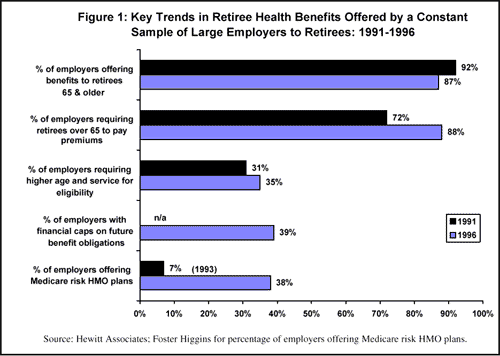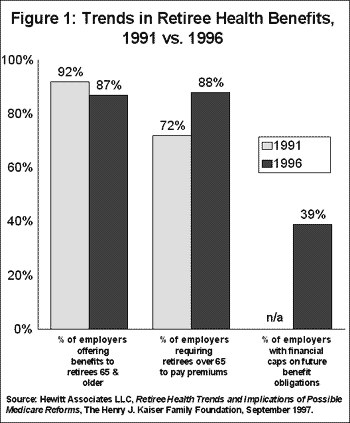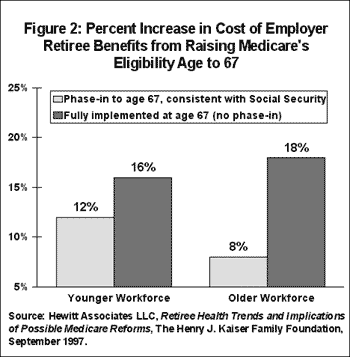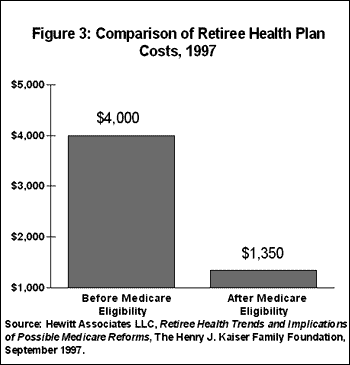It’s Your (Sex) Life: Your Guide to Safe and Responsible Sex
If a condom breaks, a diaphragm slips, or you realize after having sex that you forgot to take the pill for three days in a row, it can be enough to make the calmest person very upset! Fortunately, there is something you can do. If you act within 72 hours after unprotected intercourse, two doses of a special combination of birth control pills, available by prescription, can prevent or delay ovulation and reduce the chance of pregnancy by about 75 percent. The method is called emergency contraception (the morning-after pill).
You can get the pills from a doctor or a family planning clinic. If there is any chance you might already be pregnant you’ll need a pregnancy test. (If you are pregnant, the treatment won’t work.) The medication isn’t without side effects, though; nausea, especially, is very common for a day or so. And it’s not foolproof – it only reduces your chance of pregnancy by 75%. And even if it does work, the pregnancy protection doesn’t last so you’ll need to go back to another birth control method right away. Generally, emergency contraception costs $55 to $245 for the whole shebang (examination, pregnancy test, and pills); costs are less – or even free – at family planning clinics and health centers. To find a provider near you, you can call the Emergency Contraception Hotline at 1-888-NOT2LATE.
What Doesn’t Work
If you’re considering any of these folklorist contraceptive methods, fuhgeddaboudit!!! Here’s why:
- Douching: Rather than rinsing sperm out of the vagina, douching could actually send them swimming upstream towards an egg. (It can also increase the risk of infection.) All in all, a bad idea!
- Peeing after intercourse: An old folks’ tale! Urinating after sex does nothing to protect against pregnancy because the urinary opening is near to, but not inside, the vagina. So sperm won’t be touched by the liquid rush.
- Having intercourse during your period: First of all, just because you’re bleeding doesn’t mean you’re having your “true” period; some women bleed during ovulation. And it’s often hard to predict when you’ll ovulate. So you’d better use protection whenever you have intercourse, all month long.
How to Negotiate with Your Partner
Think you might be ready to have sex with a special someone? Before deciding, make sure you’ve considered all the issues and discussed them with your partner. After all, the decision is – always! – up to both partners. Here are three tricky sexual scenarios and solutions for how to handle them:
Scenario #1: You’re thinking about having sex but you’re just not comfortable talking about it with your partner.
Solution: First things first: If you can’t talk about it, how are you going to feel comfortable doing it? Maybe one of you thinks that talking about sex kills the mood or that it should just happen naturally when the moment is right. Wrong, wrong, wrong. Talking about sex can actually help you trust each other more and feel closer to each other because it shows you care. But most importantly, it helps you make wiser decisions, and if you decide to begin a sexual relationship, to plan ahead to protect yourselves against pregnancy and STDs. In fact, you should hash out what you’re willing to do and what you’re not and agree to use condoms for your mutual protection before things get too intimate.
Scenario #2: Your partner does not want to use a condom.
Solution: Some people will use a zillion lame excuses to weasel out of using condoms so you’d better be armed with a snappy comeback. If she says, “It takes away the romance,” you could say, “So could getting an STD.” If he says, “I can’t feel anything with a condom,” tell him “You’ll feel even less if you don’t use one because we won’t be having sex.” If she swears she won’t give you any diseases, tell her it’s nothing personal but you want to make sure both of you stay healthy. The bottom line: Don’t feel bad about saying “No condom, no sex.”
Scenario #3: You’ve already had intercourse together but now you realize that it’s just too soon for you – and you don’t want it to happen again.
Solution: It’s not too late to slam on the brakes. One thing to keep in mind is that just because you’ve done it once or twice doesn’t mean you have to do it again and again. It’s okay to say “no” to any part of sex at any time, regardless of what you’ve done in the past. The key is to be firm and clear – hopefully, before you get to the undressing stage – about how you’re feeling and what you want for the future. If your partner tries to push the issue, stand your ground, and remind him or her how strongly you feel about slowing things down. Anyone worth your time and affection should respect that.
You’ve heard about all these scary things that can happen to you if you don’t practice safer sex, and you may even know people who have caught sexually transmitted diseases (STDs). Which isn’t surprising, considering that at least one in four people will contract an STD at some point in his or her life. What is there to worry about? Plenty. Here’s what you need to know about the risks of unprotected sex.
Each year more than 12 million Americans, including 3 million teenagers, are infected with STDs, and many of them probably thought they didn’t need to worry about protection. While a few STDs are just annoying, many others can have lasting effects on your health and sex life. We all know that HIV is an incredibly deadly STD. In fact, half of all new HIV infections occur in people under 25, and AIDS has become the leading cause of death among Americans between the ages of 25 and 44. And if you think the new AIDS drugs you have been hearing about are a magic cure, forget it. They are hard to take, often have strong side effects, and do not always work. Other STDs can cause nasty recurrent symptoms, such as painful or itchy sores, and a select few can cause death or increase the risk of cancer for both women and men. What’s more, several STDs can cause infertility, meaning you could never have children.
And get this: Almost any STD increases your chances of contracting HIV. In fact, people who already have an STD, like herpes, gonorrhea or chlamydia, are three to five times more likely to become infected with HIV than someone who does not have an STD if they have unsafe sex with an HIV-positive partner.
It’s a myth that you can tell if someone has an STD by the way he or she looks or acts. That wholesome-looking guy or woman may look safe and seem safe but appearances can be deceiving. After all, you’re not just having sex with that person but with everyone they’ve ever had sex with . . . and everyone THEY’VE ever had sex with… and… well, you get the point. Because lots of STDs have no symptoms (or only subtle ones), your partner may not even know he or she has one. That’s why if you have had sex in your life, you should get tested for STDs like chlamydia, and for HIV, even if you have no symptoms and are feeling just fine.
To be blunt about it: The only way to be sure you’re having safer sex is to keep your partner’s blood, semen, or vaginal fluids out of your body. Abstinence is the safest course. But, if you’re going to have sex, always use a condom.
How can you tell if you’re infected with an STD?What should you do if you are?
If you’ve been experiencing burning urination; heavy, smelly discharge from the vagina, penis or anus; bumps, sores or itching in the genital area; pain or tenderness in the pelvic area; or other funky symptoms, you may have a sexually transmitted disease. In that case, you need a medical visit right away so you can get tested.
Why is it important to get tested early? Because if you have an STD and don’t know it – and so don’t get treatment – you could pass it on to your partner and you could risk your health and your ability to have kids in the future. Not all STDs are curable, but even for ones that aren’t, treatments are available that can help. If you have HIV, for example, finding out early means you can take advantage of new medications that are more effective if you take them before you start to get sick.
If you are a woman and you’ve been experiencing cramping or persistent pain in the abdomen or back; abdominal tenderness with movement or going to the bathroom; abnormal vaginal discharge; pain during intercourse; or any of these symptoms with a fever over 100.5 degrees Fahrenheit – these may be signs of pelvic inflammatory disease (PID). If you have these symptoms, see a doctor or go to a clinic or a hospital emergency room immediately; PID can lead to infertility in a woman if it’s left untreated. PID can also be silent – an infection that spreads to your tubes from chlamydia or gonorrhea with no severe signs that could alert you that something is wrong.
Now, to get the inside scoop on the most common STDs, consult this table:
STD: Chlamydia What it is: A bacterial infection of the genital area. How many get it: About 4 million Americans each year; the highest rates are among women aged 15 to 19 – in fact, in some communities studies have found that up to 30 percent of sexually active teenage women and 10 percent of sexually active teenage men are infected. Signs: There are no symptoms in most women and many men who have it. Others may experience abnormal vaginal bleeding (not your period), unusual discharge or pain within one to three weeks of having sex with an infected partner. How it’s spread: Through vaginal or anal intercourse. Treatment: Oral antibiotics cure the infection; both partners must be treated at the same time to prevent passing the infection back and forth – and need to abstain from intercourse until the infection is gone. Possible consequences: Pelvic inflammatory disease (PID) in women, tubal (ectopic) pregnancy, infertility, and increased risk of HIV infection.
STD: Trichomoniasis (“Trich”) What it is: A parasitic infection of the genital area. How many get it: As many as 3 million Americans each year. Signs: Often there are no symptoms, especially in men. Some women note a frothy, smelly, yellowish – green vaginal discharge, and/or genital area discomfort, usually within 3 to 28 days after exposure to the parasite. How it’s spread: Through vaginal intercourse. Treatment: Antibiotics can cure the infection. Both partners need to be treated at the same time to prevent passing the infection back and forth – and need to abstain from intercourse until the infection is gone. Possible consequences: Increased risk of HIV infection; can cause complications during pregnancy. Also, it’s common for this infection to happen again and again.
STD: Gonorrhea What it is: A bacterial infection of the genital area. How many get it: Approximately 800,000 Americans a year; the highest rates are among women aged 15 to 19. Signs: Most women and many men who get it have no symptoms. For those who do get symptoms, it can cause a burning sensation while urinating, green or yellowish vaginal or penile discharge, and for women, abnormal vaginal bleeding, pelvic pain, and/or fever within 10 days of getting infected. It takes 1 to 14 days for symptoms – such as discharge or pain – to appear. How it’s spread: Through vaginal, oral, or anal intercourse. Treatment: Oral antibiotics. Both partners need to be treated at the same time to prevent passing the infection back and forth – and need to abstain from intercourse until the infection is gone. Possible consequences: PID, tubal (ectopic) pregnancy, sterility, increased risk of HIV infection. The infection can spread into the uterus and fallopian tubes. It can also cause complications during pregnancy (including stillbirth) or infant blindness or meningitis (from an infected mom during delivery).
STD: Human Papilloma Virus (HPV) What it is: A viral infection with 60 different types, primarily affecting the genital area, both the outer and inner surfaces. How many get it: An estimated 500,000 to 1 million Americans per year; about 40 million people already have it. Signs: Soft, itchy warts in and around the vagina, penis, and anus, may appear two weeks to three months after exposure. Many people, however, have no symptoms but may still be contagious. How it’s spread: Through vaginal or anal intercourse, or by touching or rubbing an infected area. Treatment: There is no cure. Warts can be removed through medication or surgery. Even with such treatments, the virus stays in the body and can cause future outbreaks. Possible consequences: Increased risk of genital cancer for men and women. Some virus types cause the most common form of cervical cancer in women.
STD: Genital Herpes What it is: A viral infection of the genital area (and sometimes around the mouth). How many get it: Between 200,000 and 500,000 Americans each year; an estimated 40 million Americans already have genital herpes. Signs: There are two kinds of herpes. Herpes 1 causes cold sores and fever blisters on the mouth but can be spread to the genitals; Herpes 2 is usually on the genitals. Nearly two – thirds of people who are infected with herpes don’t even realize it. An outbreak can cause red bumps that turn into painful blisters or sores on the vagina, penis, buttocks, thighs, or elsewhere. During the first attack, it can also lead to fever, headaches, and a burning sensation when you urinate. Symptoms usually appear within 2 to 20 days of infection but can take longer in some cases. The first outbreak is usually more severe than later recurrences. How it’s spread: By touching an infected area or having vaginal, oral, or anal intercourse. Warning: some people may be contagious even when they don’t have symptoms. Treatment: There is no cure. An antiviral drug can help the pain and itching and also reduce the frequency of recurrent outbreaks. Possible consequences: Recurrent sores (the virus lives in the nerve roots and keeps coming back), as well as increased risk of HIV infection. May cause complications during pregnancy, possibly causing severe illness, disabilities, or (in rare cases) death for an infant if there is active infection during childbirth. (A cesarean section delivery can reduce this risk.)
STD: Syphilis What it is: An infection caused by small organisms, which can spread throughout the body. How many get it: About 120,000 Americans a year. Signs: In the first phase, sores may appear on the genitals or mouth about three weeks to three months after exposure, lasting for three to six weeks. Often, however, there are no noticeable symptoms. In the second stage, about three to six weeks after sores appear, a variety of symptoms can appear, including a rash (often on the palms of the hands and soles of the feet). How it’s spread: Through vaginal, oral, or anal sex – and through kissing. Treatment: Antibiotic treatment can cure the disease if it’s caught early, but medication can’t undo damage the disease has already done. Both partners must be treated at the same time. Possible consequences: Increased risk of HIV infection. If syphilis is untreated, about a third of people who reach the disease’s late phase may experience brain damage, heart disease, nerve damage, and other incapacitating health problems. If untreated, it can seriously harm or even kill a developing fetus during pregnancy.
STD: Hepatitis B Virus (HBV) What it is: A viral infection primarily affecting the liver. How many get it: About 200,000 Americans a year; more than 1.5 million people in the U.S. now have HBV. Signs: Many people don’t have any symptoms. Others may experience severe fatigue, achiness, nausea and vomiting, loss of appetite, darkening of urine, or abdominal tenderness, usually within one to two months of exposure. Yellowing of the skin and whites of the eyes (called jaundice), and darkening of the urine can occur later. How it’s spread: Through vaginal, oral, and anal sex – and through kissing. Also by sharing contaminated needles. Treatment: Most cases clear up within one to two months without treatment, during which complete abstinence from alcohol is recommended until liver function returns to normal. Some people are contagious for the rest of their lives. A vaccine is now available to prevent this STD. Possible consequences: Chronic, persistent inflammation of the liver and later cirrhosis or cancer of the liver; plus, 90 percent of babies born to women with HBV will carry the virus unless they are vaccinated within an hour of birth.
STD: HIV What it is: The human immunodeficiency virus (HIV), the cause of AIDS. How many get it: An estimated 40,000 to 80,000 Americans are infected each year. AIDS is the leading cause of death among Americans between the ages of 25 and 44. Signs: Many people who have HIV don’t even know it because symptoms may not appear for 10 years or longer. Others experience unexplained weight loss, flu-like symptoms, diarrhea, fatigue, persistent fevers, night sweats, headaches, mental disorders, or severe or recurring vaginal yeast infections. How it’s spread: Through body fluids such as blood, semen, vaginal fluids and breast milk – in other words, during vaginal, oral or anal intercourse; by sharing contaminated needles; via pregnancy or breast – feeding. During vaginal intercourse, the risks of catching the virus are higher for women than for men. Treatment: There is no cure – and AIDS is considered fatal. Several new antiviral medications can slow progression of the infection and delay the onset of AIDS symptoms. Early treatment can make a big difference. Possible consequences: It is the deadliest STD of all and can weaken the body’s ability to fight disease, making someone with HIV vulnerable to certain cancers and infections such as pneumonia. Fifteen to thirty percent of babies born to HIV – positive mothers can get the disease if the mother is not receiving treatment, but treatment can reduce that rate significantly.
Do you or your partner have any of these symptoms? If so, you can review the information in the corresponding sections, and consult your doctor.
- Abdominal pain or tenderness (especially with a fever):See Hepatitis B Virus (HBV)
- Bleeding from the vagina (other than your period):See Chlamydia and Gonorrhea
- Blisters on your genital area:See Genital Herpes
- Discharge from the vagina or penis:See Chlamydia, Trichomoniasis, Gonorrhea
- Irritation in the genital areaSee Trichomoniasis
- Itching in the genital areaSee Human Papilloma Virus (HPV)
- Pain or burning while urinatingSee Gonorrhea, Genital Herpes
- Painful intercourseSee Pelvic Inflammatory Disease (PID)
- Pelvic painSee Gonorrhea
- Sores on the vagina, penis, buttocks or thighsSee Genital Herpes
- Very dark urineSee Hepatitis B Virus (HBV)
- Vaginal yeast infectionsSee HIV
- Warts or bumps on the genitalsSee Human Papilloma Virus (HPV)
- Yellowing of the skin or whites of the eyesSee Hepatitis B Virus (HBV)
It’s Your (Sex) Life; Your Guide to Safe & Responsible SexReport Two Part One Part Three







